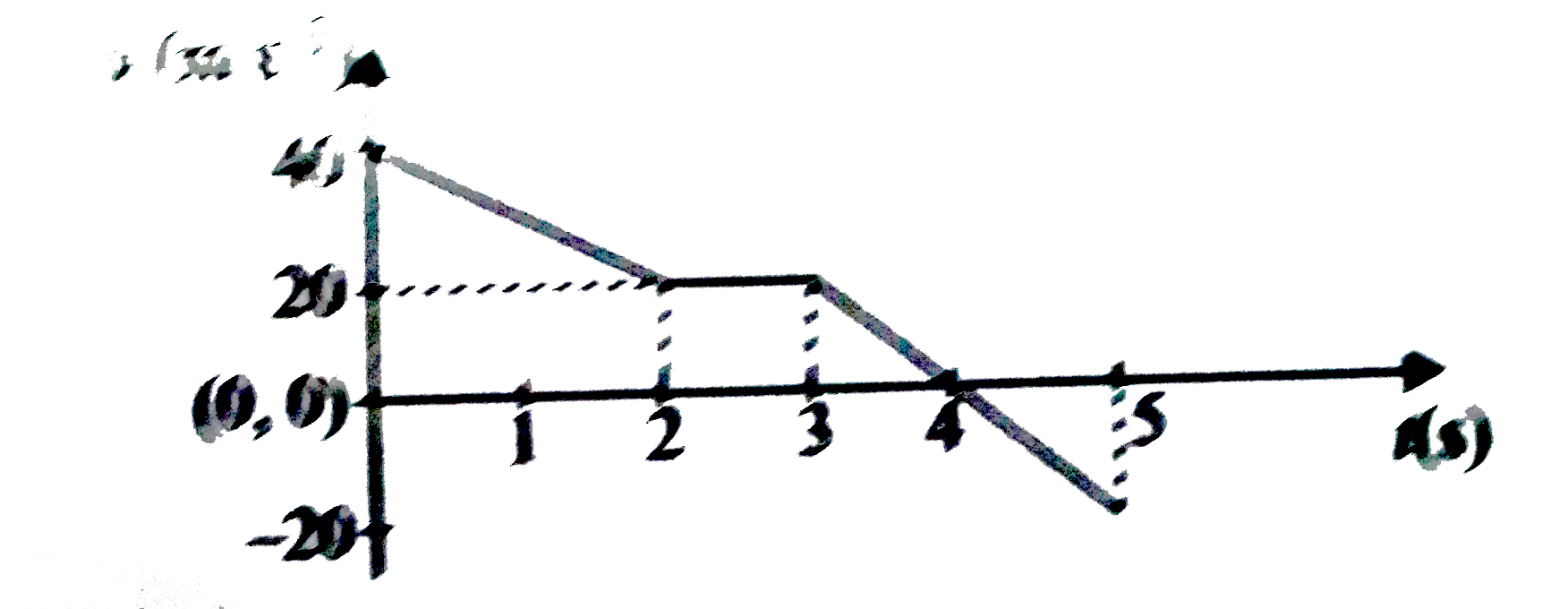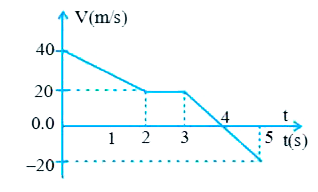For a body travelling with uniform acceleration, its final velocity is v=√180−7x , where x is the distance travelled by the body. Then the acceleration is
−8m/s2
−3.5m/s2
−7m/s2
180m/s2
The correct Answer is:B
To find the acceleration of a body traveling with uniform acceleration, given that its final velocity v is expressed as v=√180−7x, we can follow these steps:
Step 1: Square the velocity equation
Start with the equation for velocity:
v=√180−7x
Square both sides to eliminate the square root:
v2=180−7x
Step 2: Differentiate both sides with respect to x
Now, differentiate both sides with respect to x:
d(v2)dx=d(180−7x)dx
Using the chain rule on the left side:
2vdvdx=−7
Step 3: Solve for dvdx
Rearranging the equation gives:
dvdx=−72v
Step 4: Use the relationship for acceleration
We know that acceleration a can be expressed as:
a=vdvdx
Substituting dvdx from the previous step:
a=v(−72v)
This simplifies to:
a=−72
Step 5: Final result
Thus, the acceleration is:
a=−3.5m/s2
Summary
The acceleration of the body is −3.5m/s2.
---
Start with the equation for velocity:
v=√180−7x
Square both sides to eliminate the square root:
v2=180−7x
Now, differentiate both sides with respect to x:
d(v2)dx=d(180−7x)dx
Using the chain rule on the left side:
2vdvdx=−7
Rearranging the equation gives:
dvdx=−72v
We know that acceleration a can be expressed as:
a=vdvdx
Substituting dvdx from the previous step:
a=v(−72v)
This simplifies to:
a=−72
Thus, the acceleration is:
a=−3.5m/s2
The acceleration of the body is −3.5m/s2.
Topper's Solved these Questions
- MOTION IN A STRAIGHT LINE BOOK - AAKASH SERIESCHAPTER - MOTION IN A STRAIGHT LINE EXERCISE - PRACTICE EXERCISE
58 Videos
- MOTION IN A STRAIGHT LINE BOOK - AAKASH SERIESCHAPTER - MOTION IN A STRAIGHT LINE EXERCISE - problems
47 Videos
- MOTION IN A STRAIGHT LINE BOOK - AAKASH SERIESCHAPTER - MOTION IN A STRAIGHT LINE EXERCISE - EXERCISE -I
58 Videos
- MOTION IN A PLANEBOOK - AAKASH SERIESCHAPTER - MOTION IN A PLANEEXERCISE - QUESTION FOR DESCRIPTIVE ANSWER
7 Videos
- MOVING CHARGES AND MAGNETISMBOOK - AAKASH SERIESCHAPTER - MOVING CHARGES AND MAGNETISMEXERCISE - EXERCISE-III
49 Videos
Similar Questions
Knowledge Check
In the given v-t graph the distance travelled by the body in 5 seconds will be
 A100 mB80 mC40 mD20 m
A100 mB80 mC40 mD20 m
Draw a velocity-time graph for a body moving with an initial velocity u and uniform acceleration a. Use this graph to find the distance travelled by the body in time t.
View SolutionA particle starts moving in a straight line from rest with an acceleration (inm/s2) given by : a=12√x, where x is the distance travelled by the particle (in meters ) The velocity of the particle at the instant when its acceleration is 48m/s2 is .......m/s
View SolutionA body starting from rest is moving with a uniform acceleration of 8ms2. Then the distance travelled by it in 5th second will be
View SolutionThe distance travelled by a freely falling body is proportional to
View SolutionA body moving with uniform acceleration travels 84 m in the first 6 s and 180 m in the next 5 s. Find : (a) the initial velocity, and (b) the acceleration of the body.
View SolutionA body travelling with uniform acceleration crosses two point A and B with velocities 20ms−1 and 30ms−1 respectively. The speed of the body at the mid-point of A and B is.
View SolutionA body starts from rest with a uniform acceleration of 2 m s−1 . Find the distance covered by the body in 2 s.
View Solution

